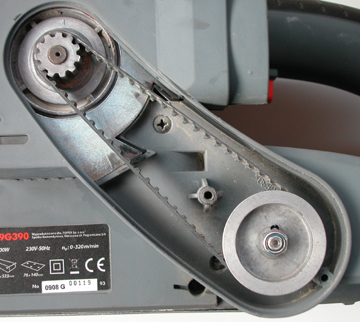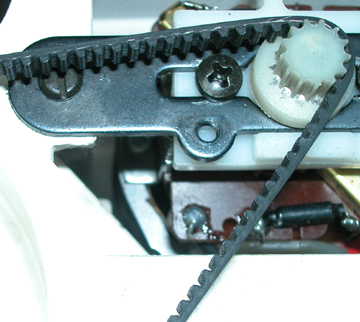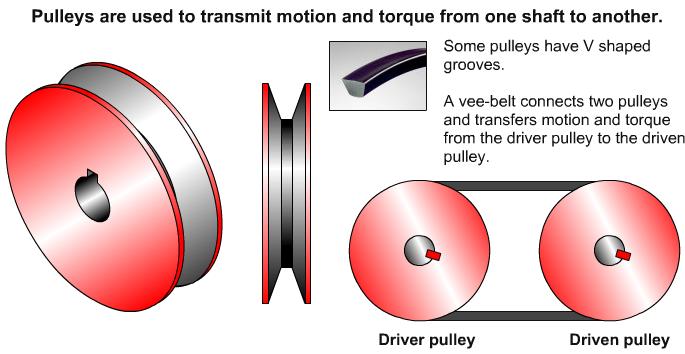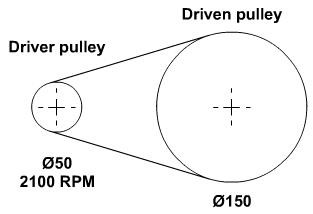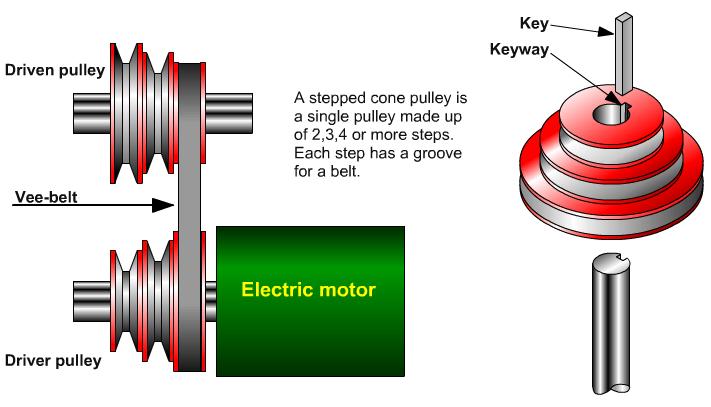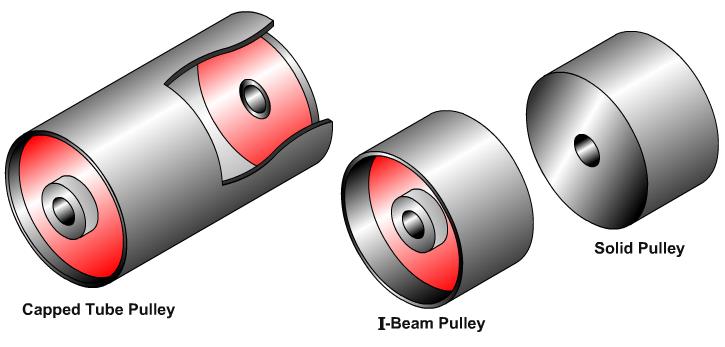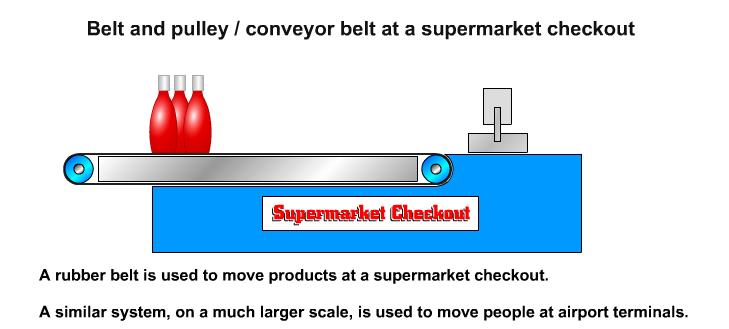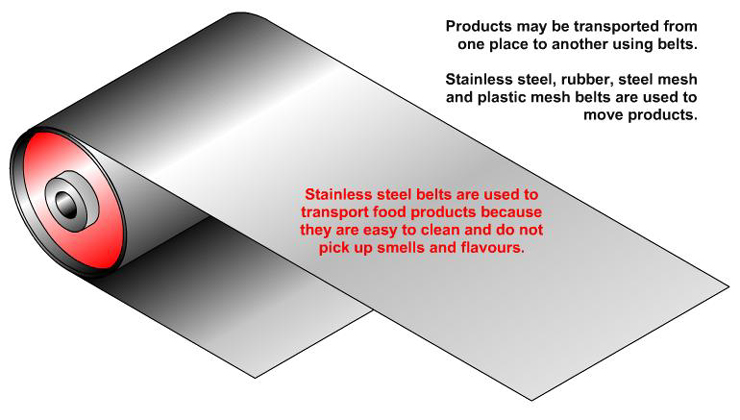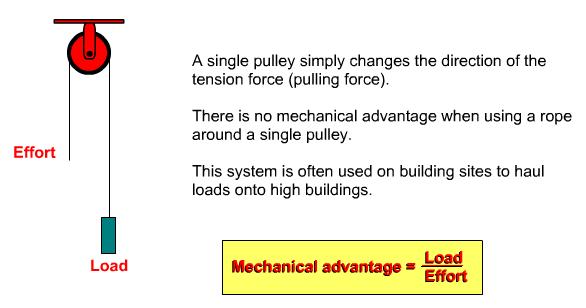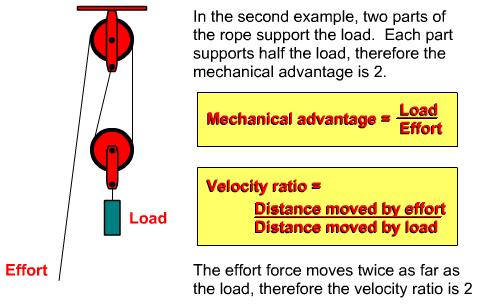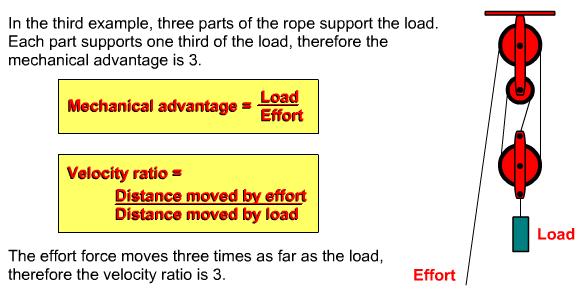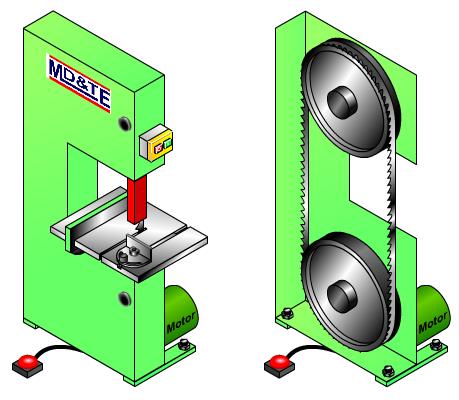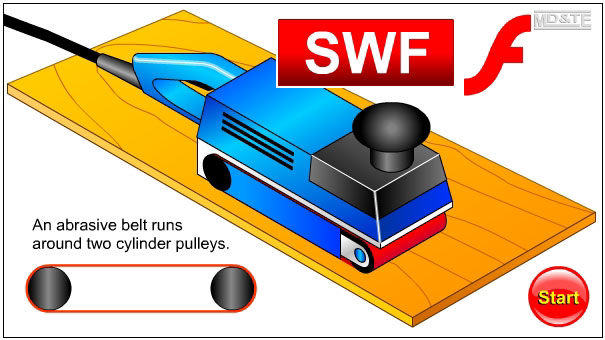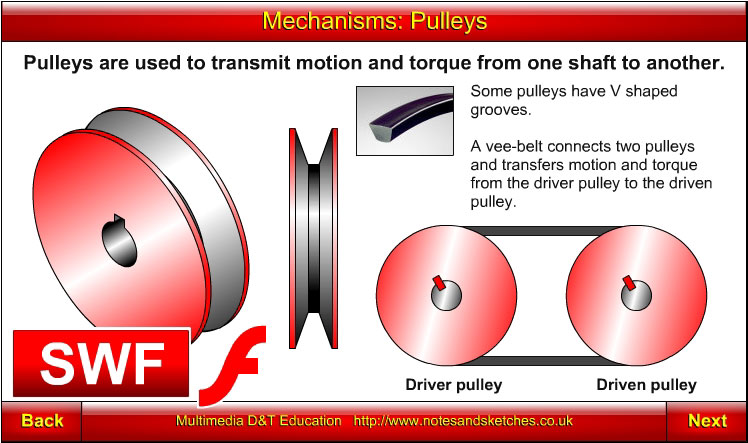 |
||||||||||||||||||||||||
Click on the screenshot above to view the "Pulleys" animation by Laszlo Lipot |
||||||||||||||||||||||||
|
||||||||||||||||||||||||
IntroductionThe output from power sources such as electric motors, car engines and wind generators is rotary motion of a drive shaft. The output rotary motion and force must be transmitted from the power source to a mechanism that will use the energy in some way. The usual ways of transmitting motion and force from the output drive shaft to a shaft in a mechanism is through:
This section will explain how:
Belt and PulleysPulleys are rollers that may be:
Each of these pulley types will be connected to another similar pulley by an appropriately shaped belt, e.g. a plain flat belt, a vee belt or a toothed belt. Flat belts slip easily on pulleys so they are mainly used as conveyors of products and people. Vee belts grip the sides of the vee groove in pulleys fairly well when the belt is pulled tight, but will slip under heavy loads. Toothed belts are used to connect pulleys that require a positive non-slip drive. They are used in applications such as drives for belt sanders, sewing machines, computer printers and as the timing belt in internal combustion engines.
Belt and pulleys used to transmit motion and torque.A pulley used to transmit motion and torque is placed onto a shaft and prevented from slipping on the shaft by a key that fits into keyways in the shaft and pulley. There may also be a morse taper on the shaft and pulley and a locknut to prevent the pulley from falling off the shaft. The driver pulley and the driven pulley rotate in the same direction.
Velocity RatioThe velocity ration between the driver pulley and the driven pulley can be calculated in a similar way to the way that velocity ration would be calculated for gears and for chain and sprocket drives.
or
Stepped Cone PulleysStepped cone pulleys are fitted to machines such as pillar drilling machines and wood lathes so that the rotational velocity of the chuck or spindle centre can be altered quickly and easily.
Cylinder Pulleys
Pulleys Used for Hauling
Band SawBand saws are belt and pulley systems where the steel belt has been cut and formed on one side so that it has saw teeth. It can be seen that the most important parts of a band saw are the pulleys and the saw blade, i.e. the band / steel belt.
Belt SanderThe main components of a belt sander are the electric motor, a driver cylinder pulley, a driven cylinder pulley and an abrasive belt.
|
||||||||||||||||||||||||
| Click here to view the PDF version of this resource. | 
|
 |
||||||||||||||||||||||

